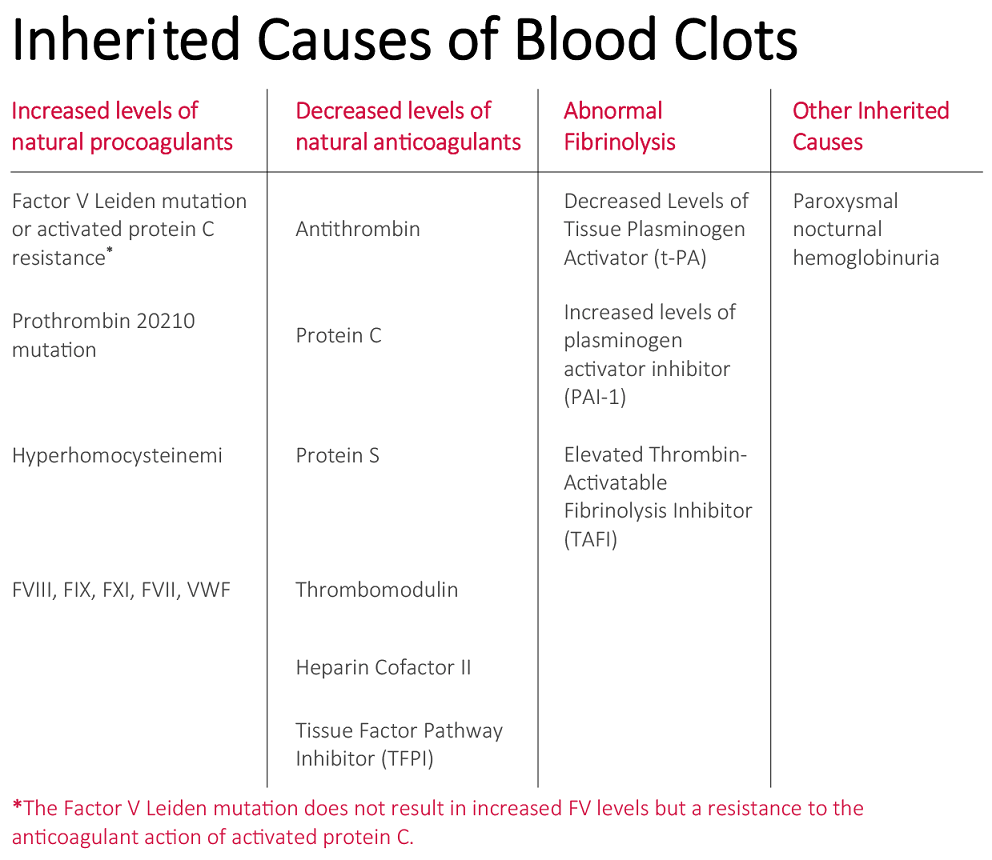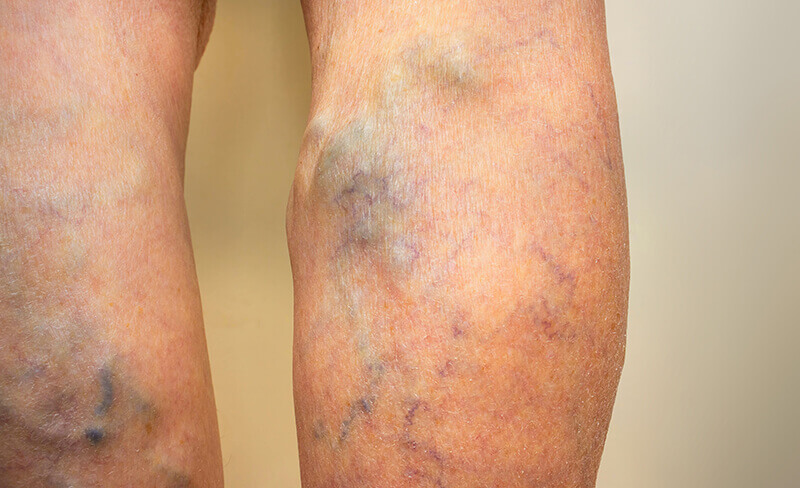Which of the Following Is a Blood Clotting Disorder
A A B B C AB D O E AO. Healthy formation of blood clots involves both the building up and breaking down of the clots.

Other Inherited Causes Of Clotting Thrombosis And Clotting
For example antiphospholipid syndrome APS and disseminated intravascular coagulation DIC.

. Clots cause legs or arms to swell. The most commonly known coagulation disorder is hemophilia a condition in which patients bleed for long periods of time before clotting. Blood clots are created by the body to stop bleeding.
This can prevent your organs from working properly and can damage your organs. A Patients Guide to Clotting Disorders. The clots can limit or block the flow of blood to your organs such as your brain kidneys and heart.
3 Which of the following is a blood clotting disorder. In TTP blood clots form in small blood vessels throughout your body. These conditions may be inherited part of our genes and present at birth or acquired the result of other triggers such as obesity illness medications injury or pregnancy etc.
Blood clotting disorders are sometimes called coagulation disorders or thrombophilias. Von Willebrands disease haemophilia A and haemophilia B are the three most commonly encountered inherited disorders of blood clotting. Hemophilia is usually inherited meaning a person is born with the disorder congenital.
A polycythemia B leukopenia C hemophilia D leukocytosis E anemia C. Normal coagulation occurs when you suffer a cut or an injury and a blood clot forms to stop bleeding. Liver disease Disseminated intravascular coagulation which is when overactive proteins in the blood cause unnecessary clotting that can block blood flow.
The blood clotting process is a multistep activity known as coagulation. Coagulation or clotting occurs as a complex process involving several components of the blood. Almost all people with factor V Leiden have one affected gene and one normal gene.
A hypercoagulable state or blood clotting disorder is when a blood clot forms and blocks the flow of blood to parts of the body. Sometimes there is an abnormality of blood coagulation that increases the risk of clotting called thrombophilia Excessive Clotting Excessive clotting thrombophilia occurs when the blood clots too easily or excessively. Categories of blood disorders that increase blood components are.
Von Willebrands disease is the most common inherited bleeding. Compatibility testing for agglutination of donor RBCs by the recipients serum is called _____. Thrombophilia which is excessive clotting.
Coagulation system disorders can affect any part of the body including the brain abdomen arms and legs. It is rare for a child to have both genes affected. Can result in deep vein thrombosis pulmonary embolism or peripheral vascular disease.
Thrombocytopenia if the disorder concerns platelets. Other inherited disorders of blood clotting are rare. TTP is a rare life-threatening blood disorder.
It was first discovered-in the 1950s. View the full answer. Factor V 5 Leiden is the most common genetic condition that can lead to blood clots.
X is the abnormal condition in which a blood clot becomes lodged in a blood vessel obstructing the flow of blood in the vessel. Inherited thrombophilia is caused by mutations in genes producing coagulation proteins in. According to the US.
Hemophilia which is an inability to clot normally. Hemophilia AB Von Willebrand Disease Rare Bleeding Disorders. They are either inherited meaning that you are born with the condition or acquired meaning you develop the condition as the result of another illness or injury.
The most common type of blood in the US. Inherited and acquired disorders can increase blood clotting. Formation of a blood clot in a blood vessel is called.
Erythrocytosis if the disorder involves red blood cells. The liver makes most of the coagulation factors including the factors in both the intrinsic and extrinsic pathways. Thrombophilia is a term used to describe a group of conditions in which there is an increased tendency to develop a blood clot.
Clotting factors are proteins in the blood that work with cells known as platelets to form clots. Blood Clotting Has Many Influencers. Hemophilia occurs when a clotting factor is missing or levels of the clotting factor are low.
If either the breakdown or buildup mechanism is thrown off a blood clotting disorder can result. When the entire coagulation process works properly blood holds firmly. Heart attacks are often caused by blood clots that blocks the further flow of blood to the organ depriving the heart of sufficient amounts of oxygen.
There are other coagulation disorders with a variety of causes. Clotting disorders can be acquired or inherited. It is also called Christmas factor.
Reduced blood flow results to damage of the organ and eventually infarctions tissue death. A gene is a characteristic that is passed down from a childs parent s. Blood clots form when blood and platelets stick together a process called coagulation or clotting.
348 4 The most common type of blood in the US. MI is the most commonly known blood clotting disorder colloquially referred to as heart attack. The portal can access those files and use them to remember.
Coagulation tests are useful in monitoring people who take medications that affect clotting ability. The major forms of coagulation disorders include. X or red blood cells make up about 95 of the volume of blood cells.
Which of the following is a blood clotting disorder. Factor II V VII X or XII deficiencies are bleeding disorders related to blood clotting problems or abnormal bleeding problems. Also known as factor IX or FIX it is involved in blood clotting a.
The frequency of these disorders is 1 in 100 1 in 5000 and 1 in 30000 respectively. Answer is option C hemophilia. July 24 2020.
Factor V 5 Leiden. Group of inherited or acquired disorders causing abnormal clots in veins or arteries. It was first discovered in a little boy by the nameof Stephen Christmas.

What Is A Clotting Disorder Thrombophilia


No comments for "Which of the Following Is a Blood Clotting Disorder"
Post a Comment